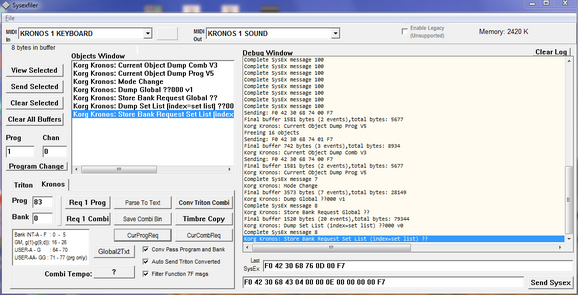
Program is the General MIDI program number that will be used to select the sound in the soundfont. Notes out of the instrument's range are marked in yellow for amateur and red for professional.

#Awave vs chickensys vs cdxtract professional
Amateur ranges are probably smaller than professional one, especially for woodwinds, or voices. TransposeDiatonic and transposeChromatic are used for transposing instruments and define the diatonic and chromatic intervals that will be used on playback.ĪPitchRange and pPitchRange are the amateur and professional ranges of the instrument in MIDI pitches. They are used in front of the staff and it's the only thing that should be translated.Ĭlef defines the default clef for the instrument. Name and short name are self-explanatory. To create a new instrument, add the following in one of the instrument-group Treble FluteTr.


Note that the extended attribute, if present, and setting to 1 will make the instrument group invisible, unless you click on "Show more" in the New Score Wizard. You can copy/paste this to add instruments in a new category, or an existing instrument group. It is an XML file, which consists of instrument categories and in each, a list of instruments. Open the file instruments.xml, or the one you selected previously with a text editor, such as Notepad++ or PsPad (Note: don't use Notepad or Wordpad on Windows).
#Awave vs chickensys vs cdxtract full
The full path should be akin to C:\Program Files\MuseScore\templates on Windows. Go to the MuseScore installation folder, in the templates directory. You should see instrument names in your language. Restart MuseScore and try to create a new score with the new score wizard. Click the blue folder and locate instruments.xml, or the localized version you want. You can change which file MuseScore will read on startup in Edit→ Preferences→ General→ instrument list. The instruments are defined in instruments.xml file. If you think it should be included in the next version of MuseScore, please let us know on the forum. You may, however, add an instrument to the instrument list for simplicity. You can also create a template with all these modifications and use it upon score creation. You can use any instrument and change the instrument name, the text in front of the staff, change the sound of the instrument in Display→ Mixer, or change range and transposition in Staff Properties. Want to add an instrument to the selection in the New Score Wizard? Read further.įirstly, this is a process that isn't often needed. SF2 Splitter: Simple tool that extracts instruments from SoundFont files. Save your creation back to disk when finished.

You can load several banks each in their own Windows, then simply drag-and-drop presets from one bank into another, to custom create banks containing just the presets you want in an all new bank. Soundfont Librarian: This librarian is a tool to manage, edit, and customize SoundFont banks. Swami (Sampled Waveforms And Musical Instruments) If you use any of these tools, your feedback is welcome on the forum. Of course, it's not possible to create, or edit a SoundFont using MuseScore, but several tools are specifically designed to do so. If you are not happy with a sound, you may want to edit the soundfont, combine several soundfonts etc. MuseScore generates sounds using a SoundFont.


 0 kommentar(er)
0 kommentar(er)
